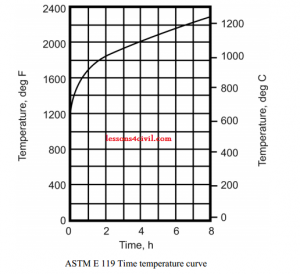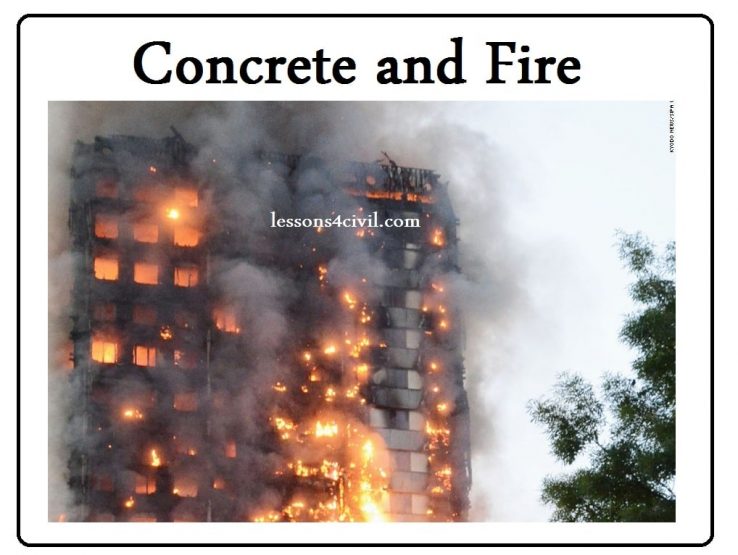Concrete strength reduction due to firing
Concrete strength reduction due to firing has been always a permanent concern for structural engineers. Most of materials, including concrete lose their strength if their temperature increases. In this article we mention several important tips about concrete to maintain the overall safety of structures in fire accidents.
Abstract
The first reaction of concrete to short term heating is that cracking initiates. As a result the integrity between aggregates and concrete paste is reduced.
Either if the heating continues, structural members are likely to totally lose their strength that eventually leads to collapse.
Experimental finding
The first reactions of concrete to heating are change in color, initiation of cracks and even spalling. Cracking usually starts at temperatures above 500 C, however it is not obvious until reaching to 900 C.
In this stage, the concrete members may suddenly collapse due to progressive spalling. In the following we recommend 3 main approaches to overcome the possibility of total failure of structure in fire incidents.
ASTM E119 Standard Fire Test
The resistance of structural members can be determined by fire test methods. ASTM E 119 suggests that full scale test by using furnace. In this test the temperature is raised in the furnace according to figure below.

The end of the test is when one of these conditions is reached:
- For walls, floors, and roof assemblies, the temperature of the unexposed surface rises an average of 150 F
- Cotton waste placed on the unexposed side of a wall, floor, or roof system is ignited through cracks or fissures which develop in the specimen during the test.
- The test assembly fails to sustain the applied service load.
- For certain restrained and all unrestrained floors, roofs and beams, the reinforcing steel temperature rises to 1100 F
Numerical modeling
The advent of sophisticated software such as ABAQUS, has opened a new hatch to predict the behavior of structure under fire incidents. These numerical models can simulate non-linear non-isotropic behavior of reinforcement concrete to predict crack development patterns. It is noteworthy that in such a analysis, loading is not constant. In other words we need to account for the internal forces due to second order effects. Other finite element software such as DIANA can do the similar job. These kinds of analysis are complex and requires a high degree of knowledge to be done precisely.
ACI 216 Method
Needless to say, the pre-mentioned methods are both expensive and time-consuming. ACI 216 recommends a reduction factor for thickness of concrete members to account for the detrimental effect of fire. Since this method is based on experimental finding it should be used for general purposes only.
here is another useful article about what happens inside concrete members in firing incidents: http://www.civilengineeringforum.me/elevated-temperature-concrete-strength/



Comments